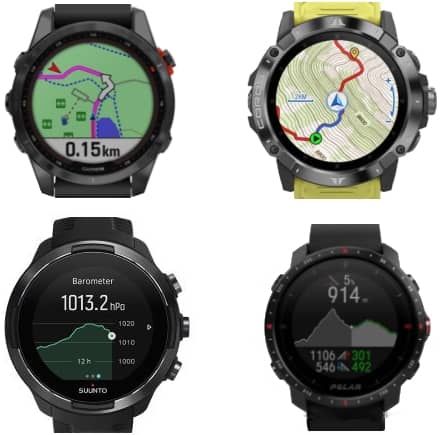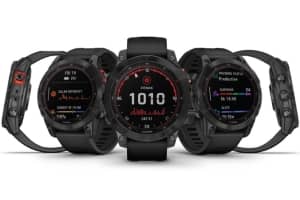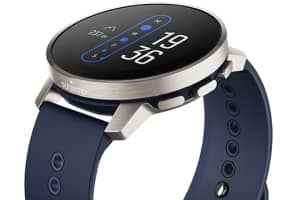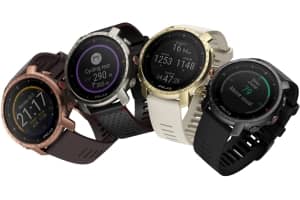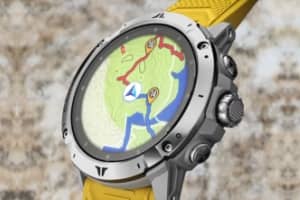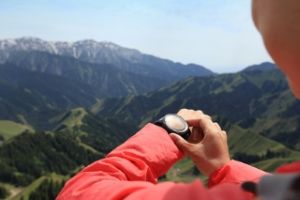- The best trail and outdoor 2022 cardio-GPS watches compared
- Compared price and physical characteristics
- Autonomy
- Sensors: everything for outdoor and trail use
- Compared functionalities
- Our opinion on these 4 multisport, trail and outdoor cardio-GPS watches: which is the best?
- Where to buy these models
The best trail and outdoor 2022 cardio-GPS watches compared
4 watches ideal for outdoor, trail, performance
In this article we have compared 4 of the best trail and outdoor GPS watches on the market today. They are all premium or high-end watches. Released in 2018 and 2021 (Suunto 9 Baro and Suunto 9 Peak), 2022 (Garmin Fenix 7) and 2021 (Coros Vertix 2 and Polar Grit X Pro), they are therefore relatively new and should still be very successful in 202 2and 2023.
Packed with sensors and rich in features, they are currently the top GPS watches for outdoor, trail and triathlon use. They are aimed at a demanding public looking for advanced functions, regular sportsmen, sportswomen looking for performance, competitors and professionals. Some of them offer great autonomy which will interest ultrarunners. They are of course also suitable for amateurs looking to progress or to enjoy themselves.
What is the best outdoor watch?
It is difficult to say which one is the best as it depends on the objective, the sport practised and the expectations of the user, not forgetting the budget of course. Some people will be looking for precision and reliability of measurements, others for a long battery life, others for a plethora of tools to help the sportsman, others for additional functions used during sport and in everyday life (music, payment, cartography), and still others for a chic watch that can be worn in town as well as for sport! (See also our comparison of the best watches for hiking).
NB: Polar offers 2 similar models, the Suunto 9 Baro and the Suunto 9 Peak, a smaller, more elegant version of the Suunto 9 Baro with a pulse oximeter. In our comparison, we present the two models and point out the differences where they exist.
The table below gives a brief comparison of the models. A more comprehensive summary table can be found at the end of the article.
| Garmin Fenix 7 | Coros Vertix 2 | Suunto 9 Baro | Suunto 9 Peak | Polar Grit X Pro | |
|---|---|---|---|---|---|
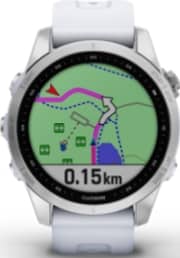 | 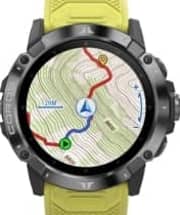 | 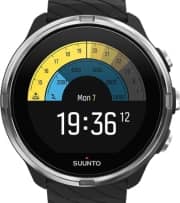 |  | 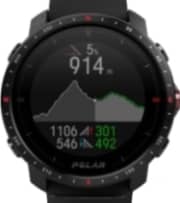 | |
| Rounded price (€) | 700 to 1200 | 700 | 600 to 700 | 570 to 700 | 500 to 600 |
| Dual frequency GPS | • | • | X | X | X |
| Mapping | • | • | X | X | X |
| MP3 player | • | • | X | X | X |
| Altitude acclimatization | • | • | X | • | • |
| Connected functions | +++ | + | X | X | X |
| Touch screen | • | • | • | • | • |
| Large screen | • | • | • | X | X |
| Military standard | • | X | X | X | • |
| Autonomy (GPS mode) | 37-124h | 140h | 25h | 25h | 40h |
| The Plus of the model | Autonomy Cartography (road, bike, ski, golf) Dual frequency GPS GPS navigation Full sports functions Connected functions | Autonomy Mapping Dual frequency GPS Material quality | GPS navigation Quality of measurements (alti, GPS) | Look and compact size GPS navigation | Complete sports functions Reliable cardio data processing |
| Where to buy | Buy | Buy | Buy | Buy | Buy |
Compared price and physical characteristics
| Key Features | Garmin Fenix 7 | Coros Vertix 2 | Suunto 9 Baro | Suunto 9 Peak | Polar Grit X Pro |
|---|---|---|---|---|---|
 |  |  |  |  | |
| Rounded price (€) | 700 / 1200(1) | 700 | 600 / 700(3) | 570 / 700(3) | 500 / 600(3) |
| Weight | 58 to 93 g(2) | 89 g | 81 or 66 g(3) | 62 or 52 g(3) | 79 or 73 g(3) |
| Autonomy (GPS mode 1s) | 37 to 124 h | 140 h | 25 h | 25 h | 40 h |
| Case size (mm) | 42 to 51 | 50 | 50 | 43 | 47 |
| Thickness (mm) | 13,8 to 14,9 | 15,7 | 16,8 | 10,6 | 13 |
| Screen size (mm) | 30,4 to 35,6 | 35 | 35 | 30 | 30 |
| Definition (px) | 240 x 240 to 280 x 280 | 280 x 280 | 320 x 300 | 240 x 240 | 240 x 240 |
| Touch screen | • | • | • | • | • |
| Color screen | • | • | • | • | • |
| Glass | Sapphire or Corning Gorilla | Sapphire | Sapphire | Sapphire | Sapphire |
| Bezel | Steel or titanium | Titanium | Steel | Steel or titanium | Steel or titanium |
| Flashlight (LEDs) | • | X | X | X | X |
| Military standard compliance (MIL-STD-810G) | • | X | X | X | • |
| Waterproofing | 10 ATM | 10 ATM | 10 ATM | 10 ATM | 10 ATM |
| Interchangeable strap | • | • | • | • | • |
The price
The 4 models compared are offered at a high price, between 500 and 1200 €. The differences can be explained by the presence or absence of cartography, but also by the materials: sapphire glass (standard on Suunto, Coros and Polar, but optional on Garmin), titanium bezel and case back (standard on Coros, optional on Suunto, Polar and Garmin). The price can go even higher with Garmin depending on the type of strap (titanium, etc.). Coros offers in our opinion the best compromise with quality materials and comprehensive functions, including mapping.
Design, structure and robustness
These watches offer a neat design. Each model has its own charm with a stainless steel or titanium bezel and a look suitable for both city and sports use. The robustness of the watch, the type of strap (interchangeable or not, with or without tools) and the choice of materials available (silicone, leather, titanium, steel, fabric, FKM rubber) are criteria to be taken into account when choosing your cardio-GPS.
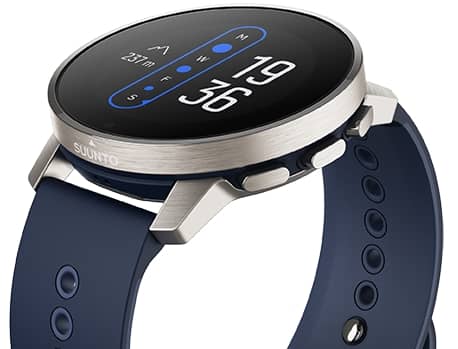
Of these 4 watches, 2 comply with the American military standard MIL-STD-810G. They are more resistant to extreme conditions (shocks, dust, temperature, etc.). The Coros Vertix 2 does not offer a military standard, but it is also robust thanks to its titanium case and sapphire crystal coated with DLC, a carbon-based material that offers great resistance to wear and tear (Coros indicates that it is 3 times more resistant to scratches than the previous model).
All can be used for light diving (freediving).
Apart from the Fenix 7 Standard and Solar versions, these watches are equipped with a sapphire crystal, the hardest material in existence after diamond! This is preferable for a watch intended for outdoor activities where shocks are commonplace. It will allow you to avoid scratches that make the display less readable. It sometimes adds a little weight (about 10 g) and can also increase the price (at least 100 € more at Garmin). The glass is also slightly matt. Corning Gorilla (found on most smartphone screens) is tough but less protective than sapphire.
The strap should be comfortable and if possible interchangeable (ideally without tools, which is the case for these 4 watches). A light silicone strap can be worn for sports and a more formal strap for the city. Polar offers a new FKM rubber strap, more resistant to abrasion than silicone, more comfortable to wear but also a little heavier. The titanium version of the Grit X Pro comes with two straps, one made of FKM and the other of lightweight openwork leather. The Coros silicone strap is comfortable but quickly shows signs of wear.
Fenix7
The advantage of the Fenix is7 that it is available in 3 case sizes (42, 47 and 51 mm). People with slim wrists will therefore finally be able to benefit from a discreet watch that offers the same functions! (see also our comparison of the best cardio watches for women). The strap is interchangeable without tools and its width varies according to the size of the watch case (thin straps for thin wrists, etc.). In addition, the brand offers stylish straps in leather, steel and titanium and braided nylon in addition to the silicone strap for sports.
The scratch-resistant sapphire crystal is only available on the Sapphire Solar version (the best of the three Fenix 7 models). It effectively protects the screen from scratches, an interesting point for sports where friction is frequent (climbing, canyoning, trail running, etc.). The Standard and Solar versions benefit from an ultra-resistant Corning Gorilla 3 glass, but less than sapphire. The watch is also ultra-robust (compliant with the MIL-STD-810G military standard (high resistance to shock, temperature and humidity).
It should also be noted that the Fenix is 7available in 3 versions which differ mainly in the quality of the glass and materials (Corning Gorilla glass and steel bezel on the Standard and Solar models, sapphire glass and titanium bezel on the Sapphire Solar model) but also in the presence or absence of the solar recharge (Solar and Sapphire Solar models). The Standard version, without solar recharge and more economical, is proposed in 2 case sizes only (7S and 7).
On the Fenix 7, Garmin offers graphs highlighting sports data during activity.
Suunto 9 Baro and Suunto 9 Peak
Suunto offers distinct watches2 with unique case sizes.
- The Suunto 9 Baro , quite bulky (51 mm, the size of the larger Fenix 7 model) but with several strap sizes to fit all body types. It exists in steel or titanium version.
- The smaller (only 43mm) Suunto 9 Peak is better suited to slim and medium sized wrists but has a smaller screen size. It is available in steel or titanium versions.
The glass of these watches is sapphire. The strap is interchangeable without tools.

Coros Vertix 2
Coros seems to have been inspired by Garmin for the design of its watch (same format, small screws on the bezel, similar displays, etc.) including for the interchangeable strap without tools and functioning like the one on the Fenix 6 and 7 (QuickFit system with push button). The watch is equipped with a sapphire crystal coated with a synthetic diamond layer, thus ultra-resistant. The bezel is in titanium as well as the case back for a relatively light watch. Note that the Vertix 2, with its 50 mm diameter and even a little more considering the buttons, is a bit bulky (the former Vertix 1 model was only 47 mm). It is even bigger than the Fenix 7X. Beware of small wrists! Coros offers a graphical display of data on some of the navigation screens during the ride (altitude, air pressure, heart rate, etc.).
Polar Grit X Pro
Polar offers a beautifully designed watch with a metal case, interchangeable straps without tools in silicone, FKM, leather and fabric, buttons that are comfortable to use (Polar has improved this aspect on its recent models). The watch is robust (compliant with the MIL-STD-810G military standard like the Polar Ignite and ignite 2, designed with this robustness in mind) and lighter than the other 3 models in this comparison.
Display': touchscreen on all models
Touchscreens are becoming the norm for many high-end watches, including Garmin's Fenix 7.
At Coros, the interface is extremely practical. The touch screen can be switched off and activated for certain functions such as GPS navigation. A digital knob allows you to scroll through the menus, zoom, etc., as on the Apple Watch. All this makes the interface very user-friendly and the watch usable even with thick gloves. At Garmin, the touch screen is very sensitive and responsive. It can be disabled by a shortcut if necessary.
In addition, the size and definition of the screen varies greatly from one watch to another. Suunto offers a large screen (1.4") with a high definition (320 x 300 px) for optimum reading comfort during sport or if you have poor eyesight. On the other hand, the watch is rather bulky, even very large on a small wrist. Garmin has opted for a variable design, with 3 case and screen sizes (1.2" to 1.4") and a definition ranging from 240 x 240 px to 280 x 280 px depending on the model. Polar offers a small screen (1.2"), with a modest definition (240 x 240 px) for an intermediate case size (47 mm like the Fenix 7). Coros, which offered a 1.2" screen on its Vertix, has switched to a large 1.4" screen in 280 x 280 px on the Vertix 2, for greater reading comfort, particularly with the introduction of cartography on this model.
Weight and thickness
Weight and thickness are important criteria depending on the sport. A light, thin watch is less noticeable on the wrist than a bulky, heavy watch. For outdoor activities, a slightly heavier watch is acceptable, provided it does not feel uncomfortable. For trail running and performance, it is better to choose a model that is as light as possible (ideally less than 80 g).
The Fenix (X 7models7), Vertix 2 and Suunto 9 Baro are among the "heavyweights" with 89 and 96 g for the Garmin7 X (models with steel and titanium bezels), 89 g for the Vertix 2 (in titanium but with a slightly heavy strap) and 81 g for the Suunto 9 Baro (72 g for the version without a barometer). If you want to find something lighter, you should choose a more expensive model in titanium (Suunto 9 Baro Titanium) or opt for the new ultralight Suunto 9 Peak and Suunto 9 Peak Titanium models, or the smaller Fenix model (Fenix 7S).
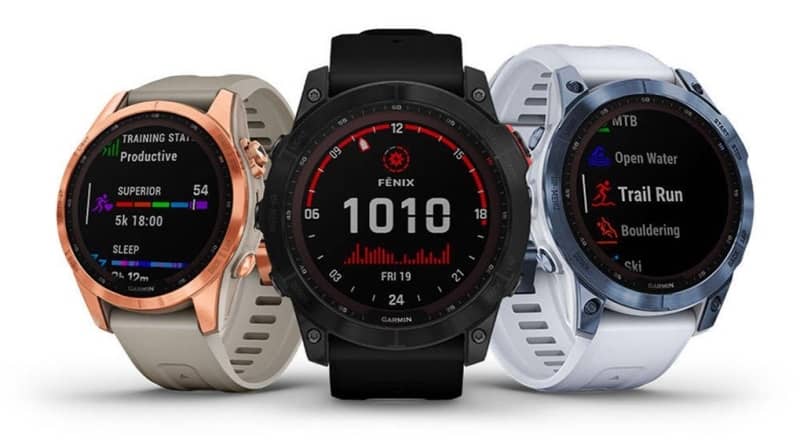
Autonomy
Record autonomy for the Coros Vertix 2 and Garmin Fenix 7 and reliable measurements in Ultra mode for the Suunto
Autonomy is an important criterion, or even eliminatory, in the choice of a cardio-GPS watch. It must be as long as possible if you are doing "ultra" type races, as the duration of use can be well over 40 hours. For shorter rides, it remains an essential criterion. The manufacturers are well aware of this and attach great importance to it. Enormous progress has been made thanks to the use of new, more economical GPS chips and the introduction of solar-powered models (Garmin).
| Model | Garmin Fenix 7 | Coros Vertix 2 | Suunto 9 Baro / Peak | Polar Grit X Pro |
|---|---|---|---|---|
| Watch mode | 11 to 37 d(*) | 60 d | 14 d | 30 d |
| GPS mode | 37 to 124 h | 140 h | 25 h | 40 h |
| UltraTrac mode | 90 to 570 days | 240 h | 170 h | 100 h |
| Rechargeable during activity | • | • | • | X |
| Mode | Fenix 7S (+Solar) | Fenix 7 (+Solar) | Fenix 7X (+Solar) |
|---|---|---|---|
| Connected watch (*) | 11d (+3) | 18d (+4) | 28d (+9) |
| GPS (GPS only) (**) | 37h (+9) | 57h (+16) | 89h (+33) |
| GPS (multi GNSS) (*) | 26h (+4) | 40h (+8) | 63h (+14) |
| GPS (multi GNSS, dual frequency) (**) | 15h (+1) | 23h (+3) | 36h (+5) |
| GPS UltraTrac (**) | 90h (+72) | 136h (+153) | 213j (+365) |
| GPS (multi GNSS) + Music | 7h | 10h | 16h |
| Shipping (*) | 26d (+17) | 40d (+34) | 62d (+77) |
| Battery saving (*) | 38d (+49) | 57d (+116) | 90d (>1 year) |
Since the Fenix 7, Garmin has offered a battery life of up to 122 hours in GPS 1s mode thanks to solar charging (up to 89 hours otherwise) for the 7X model, provided that the watch is exposed to direct sunlight during activity. The American company offers several battery modes (Tour, Expedition and Battery Saving) to last several weeks or even months during very long trips. It also offers, like Suunto, an intelligent battery management mode with a display of the consumption of the sensors and the possibility of deactivating them individually. You can also define personalised profiles to decide which sensors to activate for a given sports profile.)
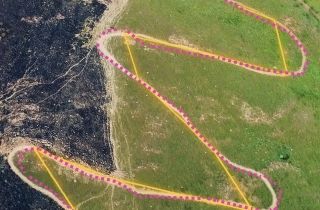
Suunto, on the other hand, offers a revolutionary solution (FusedTrack™): a power saving mode that does not alter the accuracy of the measurements too much. By combining GPS, accelerometer, gyroscope and compass data, Suunto "guesses" the missing GPS measurements to obtain an accurate track. This allows you to go from 25 hours of autonomy to 40 or 170 hours! But beware, this mode can only be used for sports such as walking, trail running or running (the accuracy is lost for sports that are too fast such as cycling, motorcycling, etc.). The Suunto 9 (Baro or Peak) also offers intelligent battery management based on previous outings and the user's choices. This means that you can request an "extension" of the battery life when needed.
Coros was inspired by Suunto and Garmin to propose an Ultra mode capable of extrapolating the missing GPS data thanks to the watch's sensors (compass, gyroscope, accelerometer) and an intelligent algorithm exploiting data from previous outings (modelling of the sportsman's stride). The results are quite satisfactory. But Coros, like Garmin, offers record autonomies: from 80 hours on the Vertix, we go up to 140 hours on the Vertix 2 (GPS mode with recording every second) and 60 days in connected watch!
As for the Polar Grit X Pro, 40 hours of autonomy are reached in GPS mode, but Polar has added an intelligent battery management system that allows you to reach 100 hours of autonomy by adjusting 3 parameters (degraded mode). The user can deactivate the optical cardio (using a chest belt can replace it with minimal consumption), reduce the GPS recording frequency and deactivate the permanent display of the screen. This degraded mode is therefore less interesting than the solutions proposed by the other 3 manufacturers.
Note that since February 2021, Garmin offers the Garmin Enduro, the equivalent of a Fenix7 X Solar without mapping and without MP3 player but offering a battery life of 70 to 80 h in GPS 1 s mode and 200 to 300 h in Ultra mode. Discover it in our detailed review of the Garmin Enduro.
Charging without stopping the watch
Another important point is charging the watch during an activity. Garmin, Suunto and Coros offer the possibility of recharging the watch during an activity, without stopping the recording. However, it will be necessary to remove it from the wrist during a break, as all three recharge via a connector located on the underside of the watch with a cable that is connected perpendicularly to the case. At Polar, this possibility is not proposed. Charging is done via the contact sensors of the heart rate monitor and therefore cannot be done while the watch is in use (even if you deactivate the optical cardio!). This is a pity.
Sensors: everything for outdoor and trail use
Outdoor watches are the best equipped in terms of sensors: GPS, heart rate monitor, ABC sensors (altimeter, barometer, compass), thermometer, gyroscope, accelerometer, even pulse oximeter (saturometer). Some sensors may be superfluous depending on the sport. Coros, like Apple, Fitbit or Samsung, even offers a basic electrocardiogram (ECG), but for the moment this is only used to display a graph of the heart and reliably measure heart rate variability to deduce stress and recovery levels.
The advantage of the Garmin Fenix 7 is that it has a recent optical heart rate monitor (4th generation Garmin Elevate).
| Model | Garmin Fenix 7 | Coros Vertix 2 | Suunto 9 Baro / Peak | Polar Grit X Pro |
|---|---|---|---|---|
| Barometer | • | • | • | • |
| Barometric altimeter | • | • | • | • |
| Manual altimeter calibration | • | • | • | • |
| Altitude combining GPS and barometer | X | X | • | X |
| GPS systems | GPS, GLONASS, Galileo, QZSS | GPS, GLONASS, Galileo, Beidu, QZSS | GPS, GLONASS, QZSS, Galileo | GPS, GLONASS, QZSS, Galileo |
| True multi-GNSS | • | • | X | X |
| Dual frequency GPS | • | • | X | X |
| Wrist cardio | • | • | • | • |
| Cardio works under water | • | • | X | • |
| ECG | X | • | X | X |
| Running power | With external sensor | With or without external sensor | With external sensor | With or without external sensor |
| Compass | • | • | • | • |
| Pulse oximeter | • | • | • | X |
| Thermometer | • | • | • | X |
| Weather functions | • | • | • | • |
| Storm alerts | • | • | • | X |
| External sensor compatibility | ANT+, Bluetooth | Bluetooth | Bluetooth | Bluetooth |
The barometer: storm warnings except at Polar
All four models are equipped with a barometer, which is essential on a watch that claims to be outdoor. It measures atmospheric pressure, deduces altitude, measures altitude difference and detects changes in the weather. Garmin, Suunto and Coros offer storm alerts triggered by sudden changes in pressure, a plus for hikers and climbers. The Coros Vertix 2 also offers pressure graphs for the last 6 hours.
The altimeter : barometric for the 4 models, mixed for Suunto
Essential for altitude and vertical speed measurements in particular, it can be barometric (altitude deduced from atmospheric pressure measured by an internal barometer) or operate from GPS measurements. For a good accuracy of vertical speed and altitude measurements, it is essential that it is barometric and that the calibration can be done manually to compensate for changes in atmospheric pressure during the ride. This is the case with the models 4compared.
Suunto, on the other hand, goes a step further by combining GPS and barometric altimeter data for increased accuracy and reliability of altitude and elevation readings (FusedAlti™ algorithm).
Polar's altimeter, which was only usable during an activity, becomes usable at all times on the Grit X Pro. The watch offers an Altitude dashboard (widget) that can be consulted at any time.
GPS: multi-GNSS or even dual frequency for more reliability and accuracy

A few years ago, GPS watches worked with a single satellite network, GPS (American system). Today, other systems are available such as GLONASS (Russian), QZSS or Michibiki (Japanese), Galileo (European) or Beidu (Chinese). There is also NavIC or IRNSS, the Indian satellite system. Having more satellites does not necessarily improve signal acquisition time and accuracy, but the combination of several networks does improve reception reliability, especially in sheltered areas. Manufacturers generally offer a choice between GPS alone or GPS in combination with another system (GLONASS, etc.). However, the combination of 2 satellite networks consumes more battery power.
The Vertix 2, and more recently the Fenix 7, stand out from the crowd with a GPS that can connect to multiple satellite systems at the same time, reducing docking time and offering a better chance of picking up a signal in areas where it is weak. This allows for a more reliable track (less extrapolation).
Coros on the Vertix 2 and Garmin on the Fenix, Sapphire Solar model, also offer dual-frequency GPS, a technology that until now was only used in aviation. It allows the correction of errors linked to the reverberations of satellite signals on buildings, rocks and trees. The result can be particularly impressive on certain routes, especially in the mountains, at sea or in the city. The watch receives the signals on 2 frequencies (L1 and L5 or G1 and G5 bands, depending on the system) and corrects the data. Read our explanation of the multi-frequency GPS.
The optical cardio: almost all of them work underwater
Most cardio watches today are equipped with a heart rate monitor on the wrist. This allows you to track your activity 24 hours a day without having to wear a chest belt and makes it easier to go out and do sports. The novelty of these recent outdoor models is that they work under water, except for Suunto. Polar was the first to offer such a system. The leader has since been overtaken by its competitors Garmin and Coros.
It should be noted that Polar offers 4 contact sensors which ensure that the watch is well positioned against the skin. This limits measurement errors. The Grit X Pro also benefits from an improved system. Orange LEDs have been added for an even better adaptation to different skin types.
Whatever the manufacturer, the reliability of the measurements remains poor, particularly under water and when the change of pace is important (in the case of split training for example). It is preferable to wear a belt or armband if you want to record usable data.
The power developed: without external sensor at Polar and Coros

The 4 watches can be coupled with an external power sensor (Stryd sensor, Foodpod, HRM-Run belt or HRM-Tri belt, etc.). Coros offers it for cycling but not yet for running. This function is not available for outdoor (not very interesting here).
Polar, caught up by Coros, is innovating (since the release of the Polar Vantage V) with a watch that evaluates power without an external sensor. It deducts it from the kinetic energy and potential energy evaluated from the watch's sensors (accelerometer, GPS, altimeter). Of course, an external sensor can also be used for better accuracy.
The other sensors
The ABC sensors (altimeter, barometer, compass) are essential for hiking and exploring. These sensors are present on all 4 watches. The compass and altimeter, which were only accessible at Polar when you started an activity, can now be displayed through dedicated dashboards (new for the Grit X Pro compared to the Grit X).
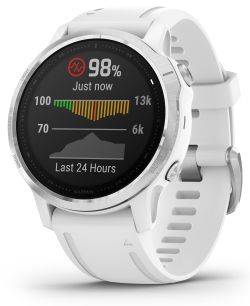
Garmin and Coros also offer a pulse oximeter. This sensor, integrated into the optical heart rate monitor, measures the rate of blood oxygenation, a parameter to be monitored for high-altitude sports (mountaineering for example) and for diving (see our explanations below).
Three of the four models include a thermometer (Fenixv7 , Suunto 9 and Coros Vertix 2). All four watches offer weather functions (storm alerts, sunrise and sunset times in Garmin and Suunto, weather forecasting based on atmospheric pressure in Coros, access to the weather via a smartphone in Polar and Garmin).
The external sensors
Today, 2 standards are used to connect a GPS watch to an external sensor: ANT+ (a low power wireless protocol developed by a subsidiary of Garmin) and Bluetooth. ANT+ is less and less used. Its interest to be compatible with most of the current sensors available on the market. Suunto, Polar and now Coros since its Vertix 2 only offer Bluetooth, hence a certain limitation for the choice of sensors. Garmin offers both protocols.
Compared functionalities
| Model | Garmin Fenix 7 | Coros Vertix 2 | Suunto 9 Baro / Peak | Polar Grit X Pro |
|---|---|---|---|---|
| GPS Navigation | ++++ | +++ | +++ | +++ |
| Nb of sports | 55+ | 26 | 80+ | 130+ |
| Mapping | • | • | X | X |
| Pulse Oximeter | • | • | • | X |
| Triathlon | • | • | • | • |
| Golf | 42.000 courses | X | X | X |
| Track running (GPS correction) | • | • | X | X |
| Integrated course generator | • | X | X | X |
| Programming of training sessions | • | • | Fractional | • |
| Interval training | • | • | • | • |
| Training follow-up | • | X | • | • |
| Field performance tests | X | X | X | • |
| Leg muscle recovery test | X | X | X | • |
| Physiological measurements | • | • | X | • |
| - VO2max | • | • | • | • |
| - Running time predictor | • | • | • | • |
| - Training effect | • | • | X | X |
| - Lactic threshold | • | • | X | X |
| - Recovery time | • | • | • | • |
| - Training load | • | • | X | • |
| - Training status | • | • | X | • |
| - Stress level | • | • | • | X |
| - Endurance level | • | • | X | • |
| - Stamina | • | • | X | X |
| Running dynamics (e.g. cadence, stride length...) | +++ | +++ | + | + |
| Power | • | • | • | • |
| Wrist power (without external sensor) | X | • | X | • |
| Altitude acclimatization | • | • | • | X |
| Altitude profile | • | • | • | • |
| Virtual partner | • | X | X | X |
| Strava Live segments | • | X | X | • |
| Connected functions | +++ | ++ | + | + |
| Activity tracking | +++ | +++ | +++ | +++ |
| MP3 player | • | • | X | X |
| Contactless payment | • | X | X | X |
Functions dedicated to outdoor and trail activities
The functions dedicated to outdoor and trail running concern GPS navigation, course data (altitude, difference in altitude, altitude profile, etc.) and weather. Here is a summary and comparison of the different functions offered by these 4 watches. We describe the main functions below.
In addition, tools for training and monitoring are expected for the trail. These are also described below in this chapter.
| Model | Garmin Fenix 7 | Coros Vertix 2 | Suunto 9 Baro / Peak | Polar Grit X Pro |
|---|---|---|---|---|
| GPS track on the watch | • | • | • | • |
| Route tracking | • | • | • | • |
| Snap to route GPS | X | • | X | X |
| Turn-by-turn guidance | • | X | • | • |
| Change route on the way | X | X | X | • |
| Return to the start (on your steps) | • | • | • | • |
| Mapping | • | • | X | X |
| Ski trail mapping | • | X | X | X |
| Mapping of bicycle paths | • | X | X | X |
| Barometric altimeter | • | • | • | • |
| Barometer calibration (manual/auto) | • | • | • | • |
| Elevation gain | • | • | • | • |
| Vertical speed | • | • | • | • |
| Altitude profile | • | • | • | • |
| Slope analyzer | • | X | X | • |
| Heat maps | • | X | X | X |
| Evaluates altitude acclimatization | • | • | • | X |
| Compass | • | • | • | • |
| Thermometer | • | • | • | X |
| Weather functions | • | • | • | • |
| Storm warning | • | • | • | X |
GPS navigation: the ultimate in Fenix 7
GPS navigation (GPS track, route tracking, navigation to waypoints, return to start, distance to go, estimated time left, route planning, etc.) is an essential function for trail riding, hiking, exploring, trekking, but also for organising a cycling or running trip on unknown trails.

In this respect, the Fenix 7 really stands out with a complete navigation tool such as the possibility to create a route from the Garmin Connect interface and to follow it (or to synchronise a route from Strava or Komoot), heat maps (to find a route off the beaten track, among those frequented by the community), the return to the starting point, a free worldwide colour mapping (city maps, roads, cycle tracks, paths, (city maps, roads, bike paths, trails, hiking maps with contours according to the options, ski and cross-country ski trails in more than 2,000 resorts worldwide), the possibility of letting the watch suggest a looped route, on roads or bike paths, starting from a given distance, or suggest a route recorded by other users in the Garmin community (Trendline function), the possibility of obtaining the route profile (ClimbPro function), and an estimate of the duration of the route. It also allows you to find a hotel, a refuge or a hostel around you. A new voice guidance function, turn by turn, allows you to navigate without looking at your watch. A new Up-ahead function brings together, in a single screen, its performance and the distance to the next key sites (refreshment points, finish, etc.) previously programmed with the route.
In addition to these functions, Garmin has introduced the LiveTrack function on its watches, which allows you to be tracked on the Internet. The Fenix 7 also offers the GroupTrack function for tracking other athletes wearing a Garmin watch with this function.
The Suunto 9 (Baro or Peak) also offers advanced navigation functions (route tracking, navigation to waypoints, waypoint recordings, thumb trail, return to the start by the same route or as the crow flies, estimated time of arrival, altimeter profiles, rate of climb, etc.). You can also take advantage of heat maps to find a route used by other watch users. Suunto is indeed a leader in the outdoor world.
The Coros Vertix 2 has free worldwide colour mapping (standard maps and topos) but is much less detailed than Garmin's (difficult to distinguish a road from a highway or a level line, no city or street names) and GPS navigation functions have been improved since the previous model (Vertix). You can follow a programmed route but there is no turn-by-turn guidance and you still have to go through a third party application (Strava for example) to load a route into the watch. Coros does not offer a route creation tool in its application. The watch offers a function to return to the start by following the track. Unlike Garmin, it does not offer a route calculation, for example to propose a loop route or to return to the starting point by the shortest route.
Polar offers route planning from the Komoot application (free in limited version, paid otherwise) and then download it to the watch. The Grit X allows you to follow a route with turn-by-turn guidance. The watch displays the distance to the next change, indicates the direction to take and gives an alert if you deviate from the programmed route. You can also return to your starting point, in a straight line, by following the original route or by retracing your steps. This watch does not offer mapping.
The oximeter and acclimatisation assessment
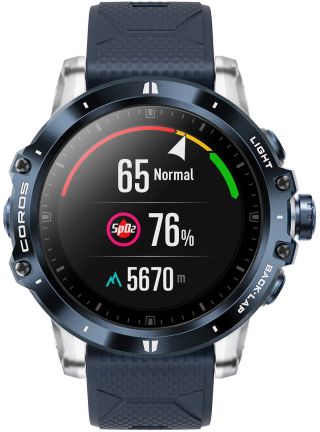
At Garmin, the oximeter is used to assess altitude acclimatisation and adjust VO2max values. It can be activated for sleep analysis but Garmin does not use the results (the values are simply displayed in the interface). The interest of the sensor is especially for mountaineers in high altitude climbs. It is important that the blood oxygen level does not fall too low, otherwise there is a risk to your health. If you climb a little too fast, the watch will indicate this. On the Fenix 7, the value is better exploited than on the Fenix 6.
Suunto, on the Suunto 9 Peak, also offers a pulse oximeter and altitude acclimatization assessment. This allows you to see how your body reacts to changes in altitude and to adjust your pace if necessary when mountaineering or climbing.
Coros goes further by offering a 24-hour measurement of blood oxygen levels above 2500 metres. The watch displays a gauge (score and colours) that explicitly indicates whether it is safe to continue climbing, whether it is necessary to take a break or whether it is better to come down.
The weather functions
All 4 models offer weather functions, including weather forecasting (on the Garmin and Polar you need a connection to a smartphone. Coros makes a forecast based on the evolution of atmospheric pressure). Garmin, Suunto and Polar display sunrise and sunset times. The Fenix 7, Suunto 9 Baro / Peak and Coros Vertix 2 have a thermometer and storm alerts (the barometer detects changes in air pressure).
Sports functions
The 4 watches offer tools to help the athlete train, track and optimise performance. The Garmin Fenix 7 and the Polar Grit X Pro are the most complete.
The Fenix 7 offers many functions. Programming of training sessions, management of splits, running against an opponent or against yourself, estimation of running time, assistance in the mountains for cycling and on hills for running (ClimbPro and PacePro functions), audio coaching, daily training suggestions (to maintain what you have learnt and not to prepare for an event), programming of alerts, definition of objectives, etc. This watch is very complete. These functions, combined with physiological measurements and race dynamics, offer powerful tools for demanding athletes, including triathletes. Garmin offers the Trend Race Predictor (an improvement on the Race predictor, the function displays the evolution, over the last 4 weeks, of the race time forecasts for a 5 km, 10 km, half or marathon).
Polar also offers comprehensive features, including some exclusive to the brand, aimed at runners and outdoor enthusiasts. These include workout programming, a recovery assessment function, running and cycling performance tests (field tests to assess FTP, PMA, VMA, VO2max), personalised adaptive workouts to prepare for a race (5, 10, 21 or 42 km) within a given time frame, night recovery assessment and use in FitSpark, a daily training programme function to stay healthy, training benefits assessment, a hill analyser and a refuelling assistant.
Coros offers interesting sports functions, such as guided training (personalised programme to achieve a defined aerobic or anaerobic Training Effect goal), running time evaluation, nutrition alerts (reminders).
At Suunto, the sports functions are much more limited. The focus is on autonomy, reliability and outdoor functions.
Sports profiles.
Suunto offers more than 80 profiles, the Fenix about 15 on the watch but more than 50 to download from Garmin Connect, the Vertix 2 about 30 and Polar has 20 on the watch but offers more than 130 to download for free on its platform.
With Suunto and Polar, each profile looks the same with generic data (distance, GPS track, calories burned, etc.). Sometimes it's just the name of the sport that changes!
At Garmin, each profile is studied to provide relevant data for each sport: running dynamics for running, number of rowing strokes and cadence for rowing, number of runs for skiing, wave height and number of waves for surfing, etc. It is also well suited to skiing (ski slope maps) and golf with more than 42,000 courses on board and specific functions for this sport. In the end, Garmin's offer is the best.
The Coros Vertix 2 does not allow for the creation of profiles. Coros regularly adds new profiles. There are now 26 profiles, including 4 profiles for skiing, 4 for running/trail and several profiles for aquatics.

Training schedule.
All four watches allow you to program workouts. Suunto limits itself to simple split training sessions. The Fenix 7 takes into account previous workouts.
Recovery
Polar, Garmin and Coros indicate the recovery time, i.e. the time needed to recover from a ride. The watch can also prompt for a moderate ride or rest. Garmin and Polar also evaluate the quality of the recovery. Garmin has the most advanced function. The Body Battery at Garmin (24-hour evaluation based on sleep and activity during the day) and Nightly recharge at Polar (evaluation of night-time recovery) evaluate this parameter for use in other functions.
Training load
The training load takes into account the past activity and the type of effort to give an overview. It allows you to optimise your training, to achieve optimal preparation for a race or competition and to avoid overtraining, which can lead to injury.

Coastal management
In addition to altitude, vertical speed and altitude difference, some watches offer more detailed information on the slope being climbed or the one to come.
Garmin offers comprehensive tools for managing pace on hills (PacePro) and analysing the upcoming slope profile (ClimbPro). Unlike PacePro, the latter function requires you to follow a programmed route in the watch. It displays the distance to the next climb, the difficulty, the average gradient of the climb, the distance and time to the summit, etc.
Polar offers Route and Altitude profiles showing the percentage of slope, the slope profile of the route (when following a programmed route), the number of climbs and descents, the difference in altitude covered and remaining to be covered. Polar also offers the Hill Splitter function, which is less sophisticated than Garmin's ClimbPro, but which has the advantage of working in real time, without programming a route. It analyses the terrain, detects hills and displays the associated data: distance travelled (flat, uphill, downhill), ascent/descent time, vertical speed, difference in altitude, number of ascents/descents. This function is particularly interesting for loop routes.
Coros displays the past and future altitude profile (on a tracked route)
Nutrition alerts
Polar offers a Fuel Wise function. It is a fueling assistant (food and hydration) that evaluates the expenditure during the ride and generates alerts when it is time to eat or drink. This helps to avoid surprises such as hunger pangs or loss of performance due to dehydration.

Coros offers nutrition alerts, but they are less elaborate than those of Polar. The watch issues an alert after a set time indicating that you should consider refuelling.
Other outdoor tools
The Fenix 7X (the larger model) has a built-in LED torch. It offers a white light similar to that of a smartphone or a red light with adjustable brightness. You can choose between various types of lighting (continuous, strobe, etc.) including a special running or trail lighting. It detects arm movements and alternates lighting (white, red, off) according to the position of the arm, the idea being to see (white lighting when the arm is in front) and be seen (red lighting when the arm is behind).
Garmin and Suunto also offer a "torch" function that activates the backlight. The brightness is sufficient to light up the inside of a tent or room at night.
Physiological measurements and running dynamics
Increasingly present on sports watches, physiological measurements help the sportsman to manage his training and optimise his performance. From the measurement of heart rate and its variability and other parameters (power, cadence, etc.), the watch can estimate the athlete's physical condition, his or her VO2max, physiological age, stress level, training level, the effect of training on the organism (training effects, training status and load, etc.).
Garmin, Polar and Coros even predict a running time based on distance, training level and fitness level. The Suunto 9 assesses stress levels, recovery and VO2max. Coros also provides an assessment of overall endurance and energy remaining for the current workout (stamina) as well as an accurate assessment of stress and recovery using an ECG sensor. Polar evaluates nightly recovery (Nightly Recharge). With the Fenix 7, Garmin introduces real-time stamina (assessment of available energy during activity), which makes it possible to know how many kilometres you can go before your resources are exhausted.
In addition to physiological measurements, these watches offer running dynamics, advanced functions for runners (and cyclists, at Garmin), such as running power (see below), stride length, running cadence, ground contact time, vertical oscillation, ground contact time balance, vertical ratio and more.
Each of the watches compared here measures running power (running or trail and also skiing at Garmin). Coros measures it with a dedicated sensor, Garmin, Polar and Suunto with a Stryd sensor. Polar and Coros are also able to measure running power without an external sensor thanks to the watch's other sensors. Garmin also offers a downloadable application (Running Power) on its Connect IQ platform for use with a cardio belt or the Running Dynamics pods sensor.
Connected and safety features: out of the ordinary for Fenix 7
Polar and Suunto offer the bare minimum: smartphone notifications (SMS, email, incoming calls) and, for Suunto, those of the classic applications (WhatsApp, Twitter, Instagram, FB, WeChat, FB Messenger). Polar also offers music control from a smartphone.
Coros offers control of a camera from the watch and a basic MP3 player (you can play music on board but you can't import playlists or listen to streaming music). There is also an assistance function in the smartphone application but nothing on the watch.
The Fenix 7, on the other hand, allows you to reject incoming calls from a Smartphone or to send predefined SMS messages. It offers LiveTrack (to be tracked remotely on the Internet) and GroupTrack functions, the possibility of listening to music locally (mp3 player) or by streaming with Spotify or Deezer or Amazon Music, the possibility of making purchases (Garmin Pay function), control of compatible devices (VIRB 3D camera, etc.), downloading maps directly from the watch (count on several hours in WiFi!) Thanks to the WiFi connection, you can synchronise the application with the route data, download music and firmware updates. The Fenix 7 has a contactless payment system (Garmin Pay) so you can pay directly from the watch. The watch is capable of detecting falls and sending an SOS call to a programmed contact. Finally, in 2022 Garmin added the possibility of configuring the watch from Garmin Connect, giving access to all possible settings from the watch (choice of screens, customisation of profiles, selection of data fields, etc.). Synchronisation is done in real time in both directions. You can save and restore all the settings of the watch from your smartphone or computer.
| Model | Garmin Fenix 7 | Coros Vertix 2 | Suunto 9 Baro / Peak | Polar Grit X Pro |
|---|---|---|---|---|
| Smartphone Notifications | • | • | • | • |
| MP3 player | • | • | X | X |
| Music platforms (Deeze, Spotify, Amazon Music) | • | X | X | X |
| Contactless payment | • | X | X | X |
| LiveTrack | • | X | X | X |
| Fall detection | • | X | X | X |
| Assistance in case of incident (SOS call) | • | X | X | X |
| Weather | • | • | • | • |
| Calendar | • | X | X | X |
Activity and health monitoring
The 4 watches offer more or less similar functions: distance covered, number of steps, calories burned, quality of sleep, stress (except with Polar). The Fenix 7 and Coros Vertix 2 also count the number of floors climbed and the intensive minutes. Garmin also offers a health check which, after a 2-minute test at rest, displays an overview (heart rate, respiratory rate, blood oxygen level, stress level, heart rate variability) allowing medium to long-term monitoring.
| Model | Garmin Fenix 7 | Coros Vertix 2 | Suunto 9 Baro / Peak | Polar Grit X Pro |
|---|---|---|---|---|
| Distance | • | • | • | • |
| Number of steps | • | • | • | • |
| Calories | • | • | • | • |
| Nbr of stages | • | • | X | X |
| Detailed sleep analysis | • | • | • | • |
| Stress | • | • | • | X |
| Intensive minutes | • | • | X | X |
| Health check | • | X | X | X |
Our opinion on these 4 multisport, trail and outdoor cardio-GPS watches: which is the best?
Even if the Garmin Fenix 7 stands out from the crowd, there is no one watch that is better than the other, because it all depends on the objective and the tools you need. These top-of-the-range outdoor watches have different and sometimes complementary advantages: with or without cartography, with more or less advanced functions (sports functions, GPS navigation, connected functions).
Below you will find a summary table and our more detailed opinion on each of the outdoor watches.
The Fenix 7 is the most comprehensive and will appeal to demanding sportsmen, competitors and fans of numbers. For mapping, it is also our favourite (rather than Coros' Vertix 2). It shines with a wealth of functions and tools, advanced connected functions for everyday use and a wide choice of models and straps. The choice of model will depend on the size of the wrist (7S for thin wrists, 7X for wide wrists), solar charging (Solar and Sapphire Solar models) and the quality of the materials (sapphire crystal and titanium bezel for the Sapphire Solar model).
The Suunto 9, with its decidedly sporty look, is more sober and comes in either a bulky version (small wrists please) or a slimmer, more stylish version (Suunto 9 Peak) but with a smaller screen. It offers exceptional battery life, accurate measurements even in Ultra mode, and a management mode that will delight fans of long-distance running.
The Coros Vertix 2 offers a model that has matured enormously compared to the Vertix 1. It is a serious alternative to the leading watches. Its altitude mode is perfect for mountaineers and its record autonomy alone is a criterion of choice! We also appreciate the quality of the materials (sapphire glass, titanium bezel) and the neat appearance of the watch.
The Polar Grit X Pro, Polar's top model, also offers functions worthy of the best outdoor watches and sports functions that are now on a par with those of Garmin as well as reliable measurements.
| Garmin Fenix 7 | Coros Vertix 2 | Suunto 9 Baro / Peak | Polar Grit X Pro | |
|---|---|---|---|---|
 |  |  |  | |
| Price | $$$($) | $$$$ | $$$ | $$$ |
| Ruggedness | Military standard + sapphire crystal (option) | Sapphire Glass + Titanium | Sapphire crystal | Military standard + sapphire crystal |
| Screen definition | ++(+) | +++ | ++(+) | ++ |
| Autonomy GPS mode | +++(+) | ++++ | ++ | +++ |
| Battery life in Ultra mode | +++(+) | ++++ | ++++ | +++ |
| Sports functions | ++++ | +++ | + | ++++ |
| Outdoor functions | ++++ | ++++ | ++++ | ++++ |
| GPS navigation | ++++ | ++ | +++ | +++ |
| Mapping | ++++ | +++ | ||
| Connected functions | +++ | + |
| Model | Strong points | Points to improve |
|---|---|---|
| Garmin Fenix 7 | Ultra complete Touch screen Robust (military standard) Sports functions ++ Physiological measurements++ Running dynamics Advanced GPS navigation Free color carto, Free color map, ski and cross country maps, bike trails Integrated course generator MP3 player Payment system Flashlight (Fenix 7X) Config from Garmin Connect | Screen size and definition perfectible No native power on the wrist |
| Suunto 9 Baro / Peak | Great autonomy Intelligent battery management Quality of measurements (fusedAlti, FusedTrack, FusedSpeed) GPS navigation Practical gauges Comfort of the screen (Baro) or small watch (Peak) | Few new functions Little physiological measurements No native power on the wrist |
| Coros Vertix 2 | Quality of materials GPS dual frequency Autonomy Free mapping Complete sports functions Power on the wrist Altitude mode and practical recommendations Guided workouts Robust and quality materials Practical interface even with gloves MP3 player | GPS navigation and mapping perfectible No mountain bike profile Little watchfaces Little connected functions for the price ECG not available |
| Polar Grit X Pro | Robust (military standard) Very complete and good price Power on the wrist Training tools Slope analyzer Fueling assistant Intelligent battery management | No downloadable widgets or watchfaces Komoot paid app for route planning |
Garmin Fenix 7: for sports functions, GPS navigation and size

The Fenix 7 is currently the most comprehensive watch on the market, especially for outdoor use. It is the queen of sports watches. It is robust and its interface is user-friendly. It has all the useful sensors. It offers full functionality for training, GPS navigation and health monitoring. The mapping, MP3 player, payment system, and many practical training functions make it really interesting.
The Fenix 7X, especially the solar models, is also excellent and suitable for ultra-trail races. Elegant, it can be worn in the city and at work in addition to sport.
This is the watch we recommend for professional use, for competitors or for demanding athletes looking for advanced tools and statistics. For optimal autonomy, opt for one of the models with solar charging (Solar or Sapphire Solar), as the solar sensor is very efficient (much better than the Fenix 6). For greater durability of the watch, opt for the Sapphire Solar model, which is the most robust (and also the most expensive) and which, moreover, has a more accurate dual-frequency GPS and enough memory to store maps of the whole world (you will have to download the maps on the other models). The Fenix 7X also has a LED-based torch with a light similar to that of a smartphone, which is also useful for seeing and being seen during night-time running or trail running.
The Fenix fits all wrist sizes, a definite advantage for people with slim wrists and those who want a watch that is discreet enough to be worn on a daily basis. Garmin also offers stylish wristbands for the city and for work and an easy attachment system (no tools required).
It's hard to beat that!
Read our review of the Garmin Fenix7
For sports use only, we recommend the Garmin Forerunner 945, an outdoor and triathlon watch that is almost as complete (equivalent to the Fenix 6 Pro), lighter and less expensive (but also less stylish) or the Garmin Forerunner 945 LTE, with 4G connectivity
Suunto 9 Baro and Suunto 9 Peak: for robustness, accuracy, screen comfort and battery life
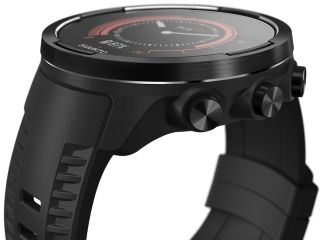
The Suunto 9, with its less developed functions, is nevertheless a highly sought-after watch for its great autonomy (up to 170 h), the precision of the GPS track in energy-saving mode (thanks to FusedTrack™) and of the altitude measurements (thanks to FusedAlti™), the outdoor functions and the comfort of its 320x300 px screen (Suunto 9 Baro). The Suunto 9 Peak is a slimmer and more elegant model, better suited to smaller wrists. Suunto also has a good reputation for outdoor use. Both watches offer$ an impressive battery life that ultra running fans, mountaineers or hikers going for several days in the mountains are looking for. The intelligent battery management is also an asset. It allows you to switch modes at any time to extend battery life without compromising track accuracy. No more compromises between battery life and data accuracy! Finally, the FusedAlti™ and FusedSpeed™ functions are a plus compared to the competition. The Suunto 9 Peak is also attractive and robust with its sapphire crystal. It is perfectly suited for outdoor activities, hiking, trail running and of course all long (ultra) runs, multi-day trips and trekking. It's a pity that the functions offered are not more developed and that Suunto does not offer cartography. That said, we can hope that the watch will evolve further through new software updates.
Read our review of the Suunto 9.
Read our review of the Suunto 9 Peak
Read our Suunto 9 vs Suunto 9 Baro vs Suunto 9 Peak comparison: the differences, which one to choose
Coros Vertix 2: complete, with high-end materials and record autonomy

The Coros Vertix 2 offers complete functions, an accurate GPS, a record autonomy, quality materials (titanium, sapphire) and resistance to extreme conditions (temperature, pressure). It offers impeccable GPS quality as well as new functions such as altitude acclimatization evaluation and recommendations for safe climbing. It is very attractive for mountaineering, skiing or hiking in the high mountains. Its record autonomy is also an advantage over the competition for very long outings (trekking, ultra trail), including in very cold weather (other watches do not hold up as soon as the thermometer drops). It could be the perfect outdoor watch but its still limited connected functions, its cartography, less detailed than Garmin's, and its perfectible GPS navigation are points that may still make a certain number of sportsmen hesitate. It's also a shame that Coros still doesn't offer an application for creating routes.
Read our review of the Coros Vertix 2
Polar Grit X Pro: robust, complete and with new functions
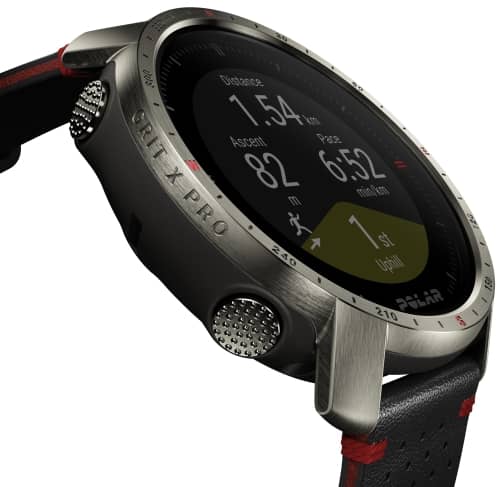
Polar has been lagging behind when it comes to trail and outdoor watches. This new Grit X Pro model brings the functions that were missing for these activities with, in addition, the power on the wrist (without external sensor), new functions such as the hill analyser or the refuelling assistant and a great robustness of the watch (military standard). The previous Grit X offered limited GPS navigation functions. This new model changes the game. This is a watch that is on a par with the Garmin and Suunto models in terms of outdoor functions. We also appreciate Polar's experience in the use of heart rate and its variability.
Read our review of the Polar Grit X Pro
Where to buy these models
These watches are available on the internet. Discover them at our partners and take advantage of our promotion codes.
Buy Garmin Fenix 7
Buy Coros Vertix 2
Buy Suunto 9 Baro
Buy Polar Grit X Pro
Commercial links. Prices are not contractual. Please visit the merchant site.
These articles may also interest you
Fenix 7 and Epix: the 2 new high-end watches from Garmin
Suunto 9 Peak: ultra-compact for outdoor and triathlon
Polar Grit X Pro : parfaite pour l'outdoor !
Coros Vertix 2 : la meilleure montre outdoor ?
Meilleures montres GPS altimètre 2026 pour la randonnée
Comment bien préparer une randonnée ou un trekking ?
Photo credit : Adobe Stock. This article contains commercial links.

